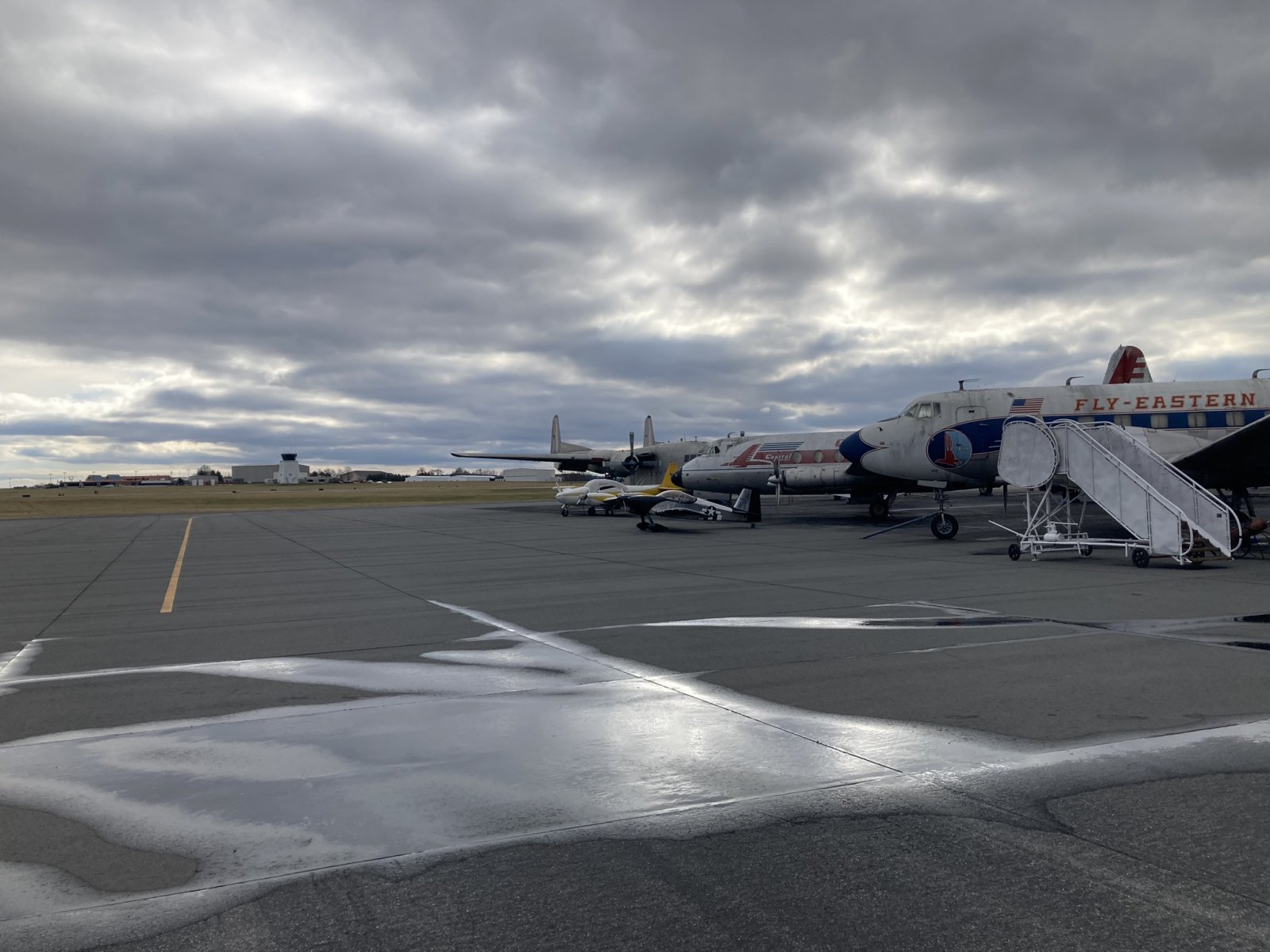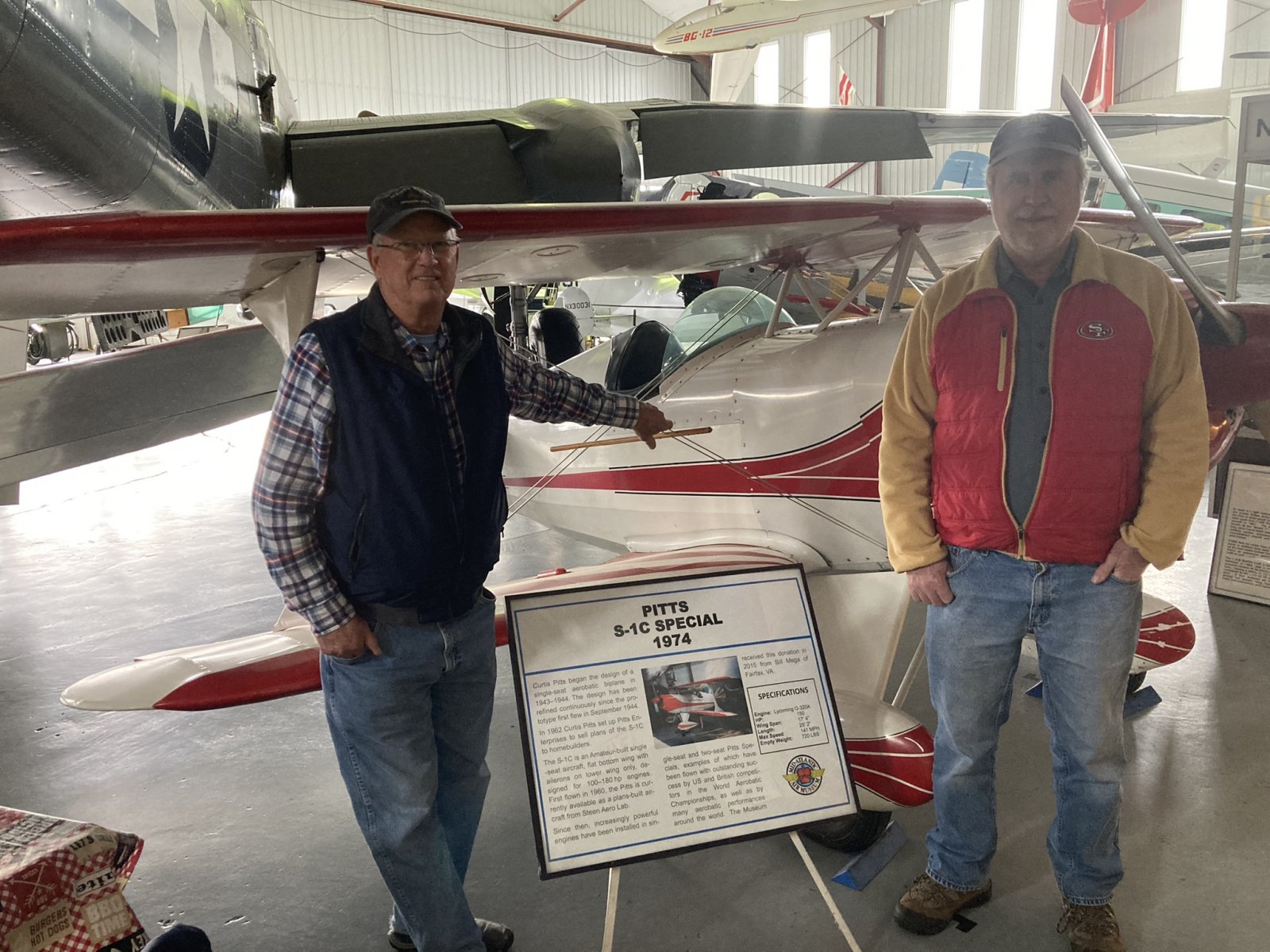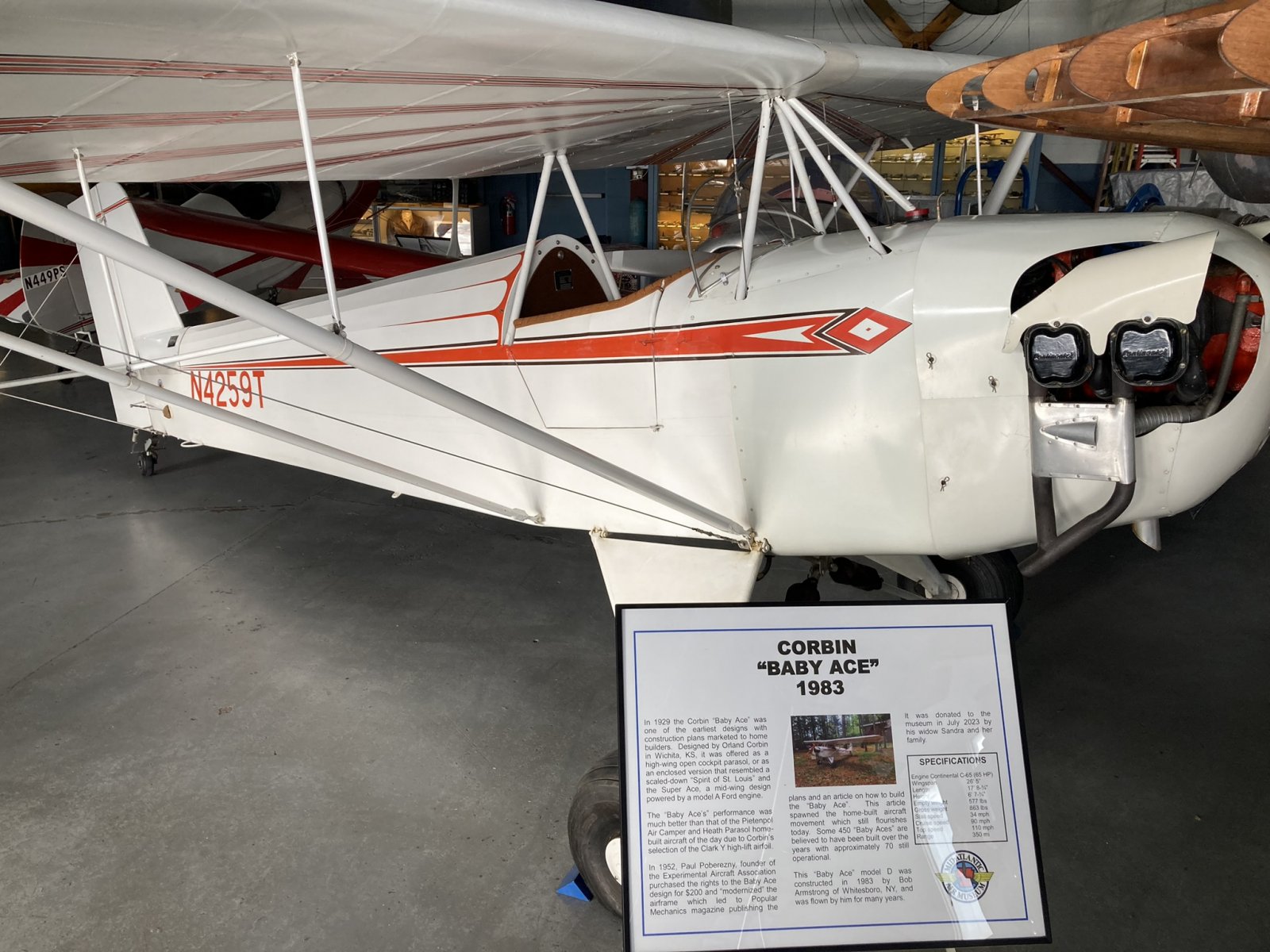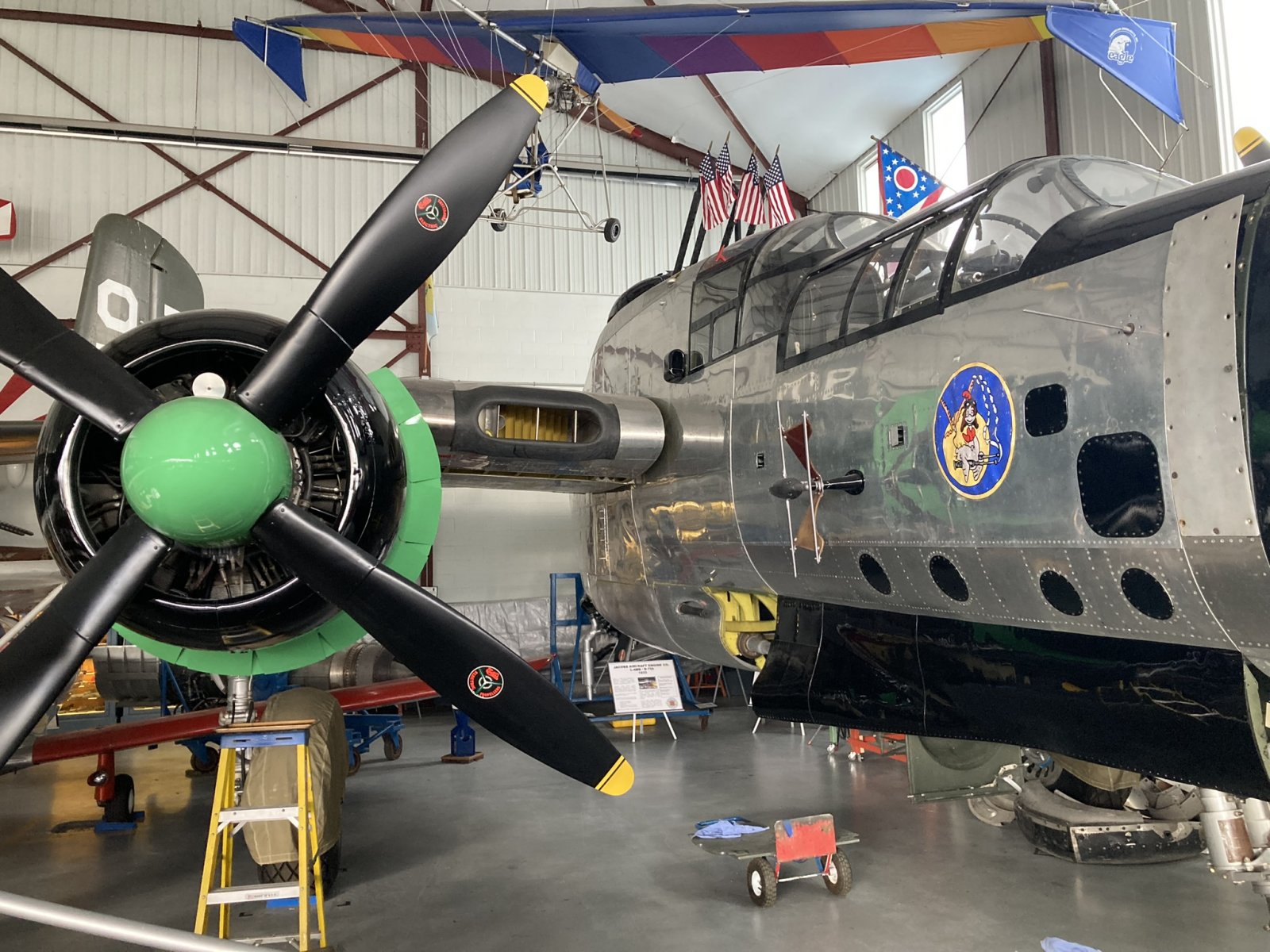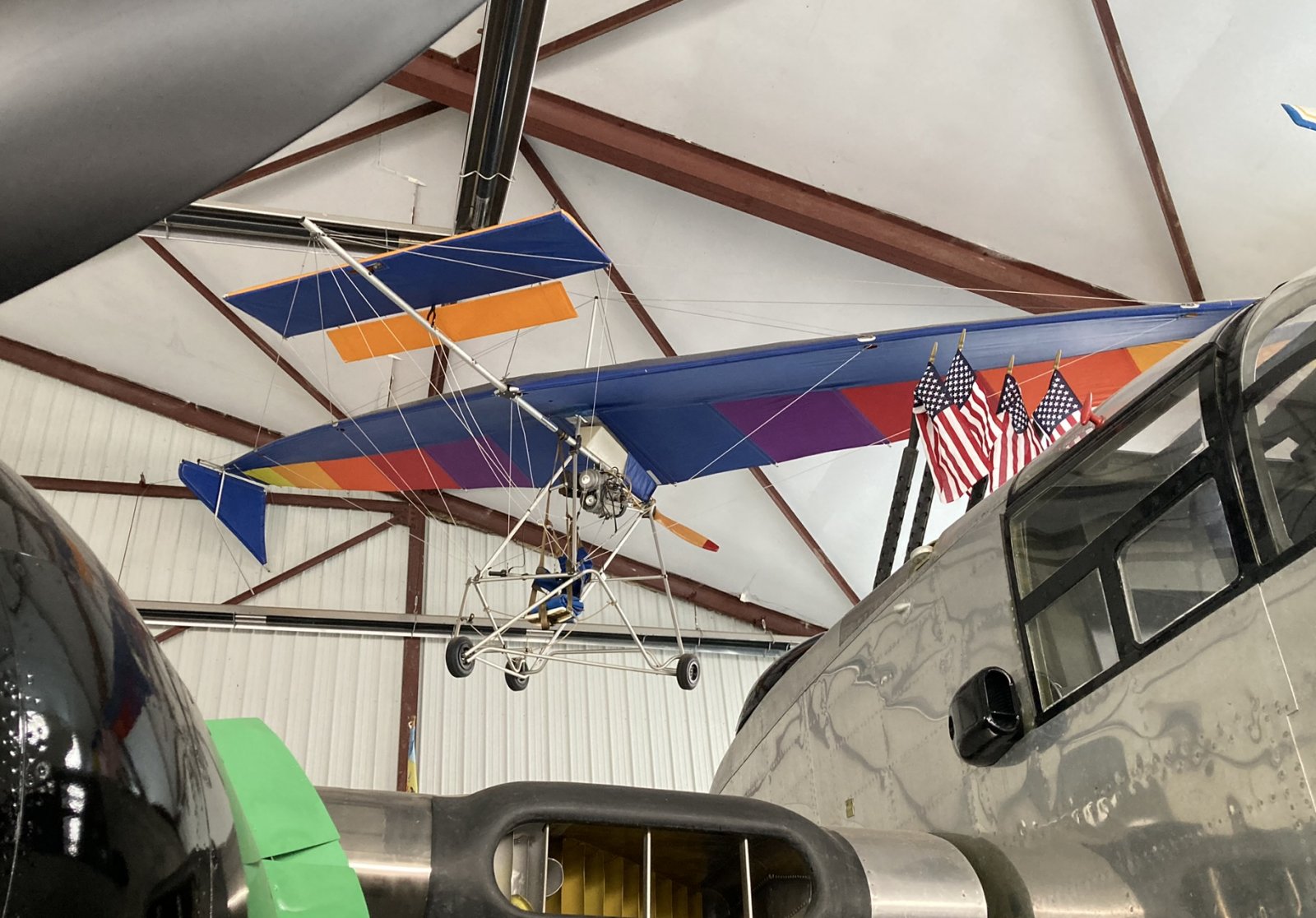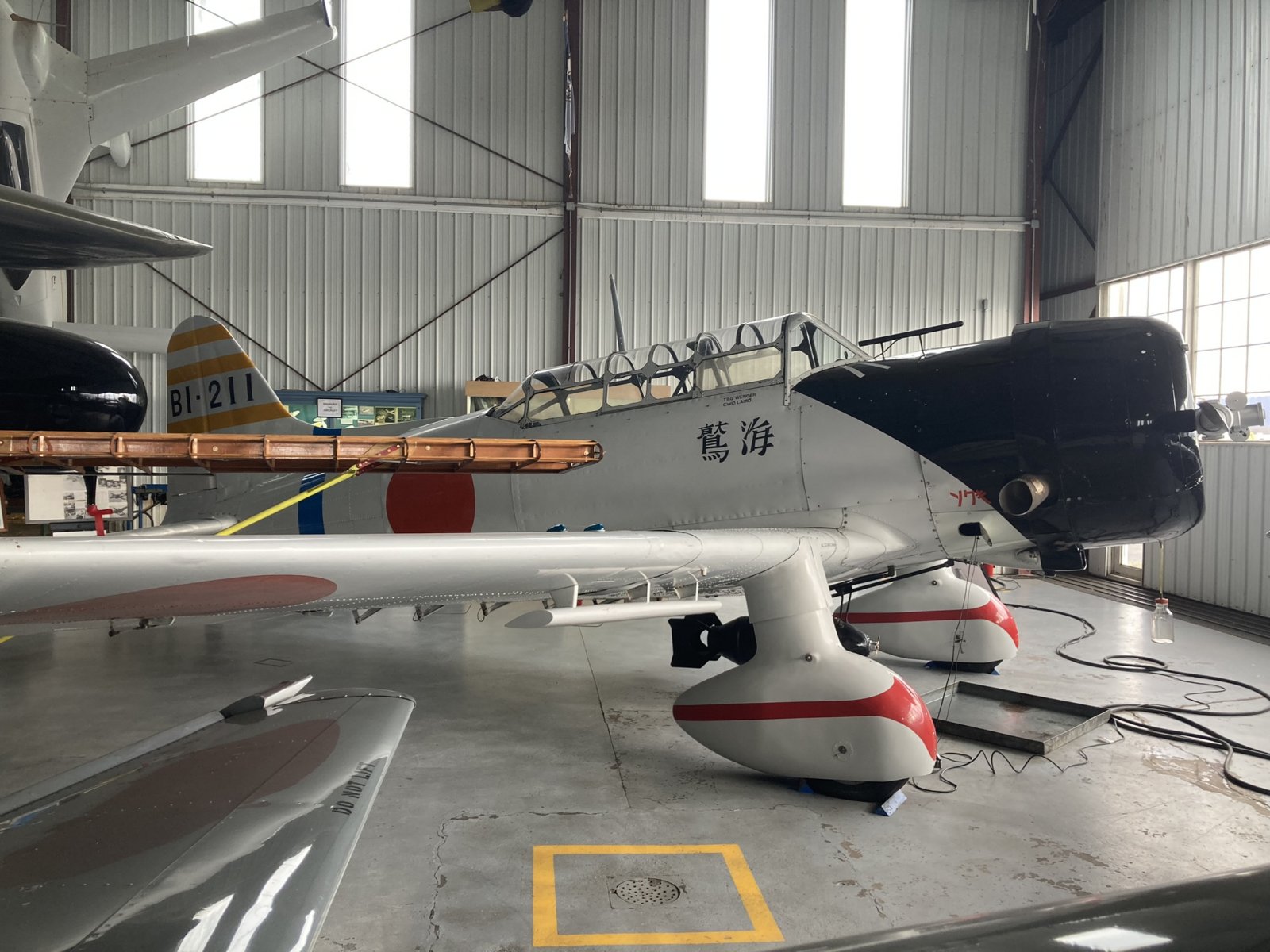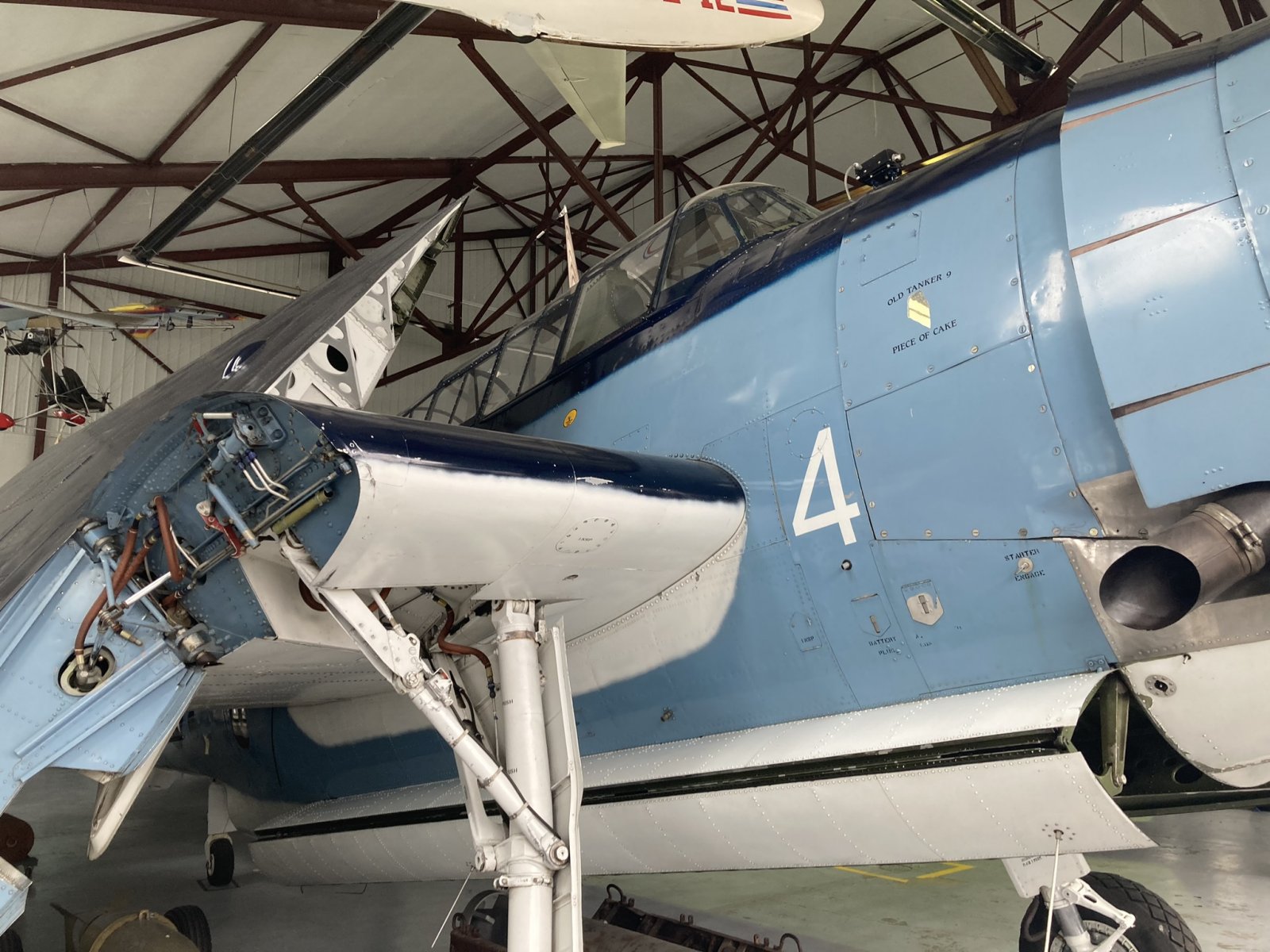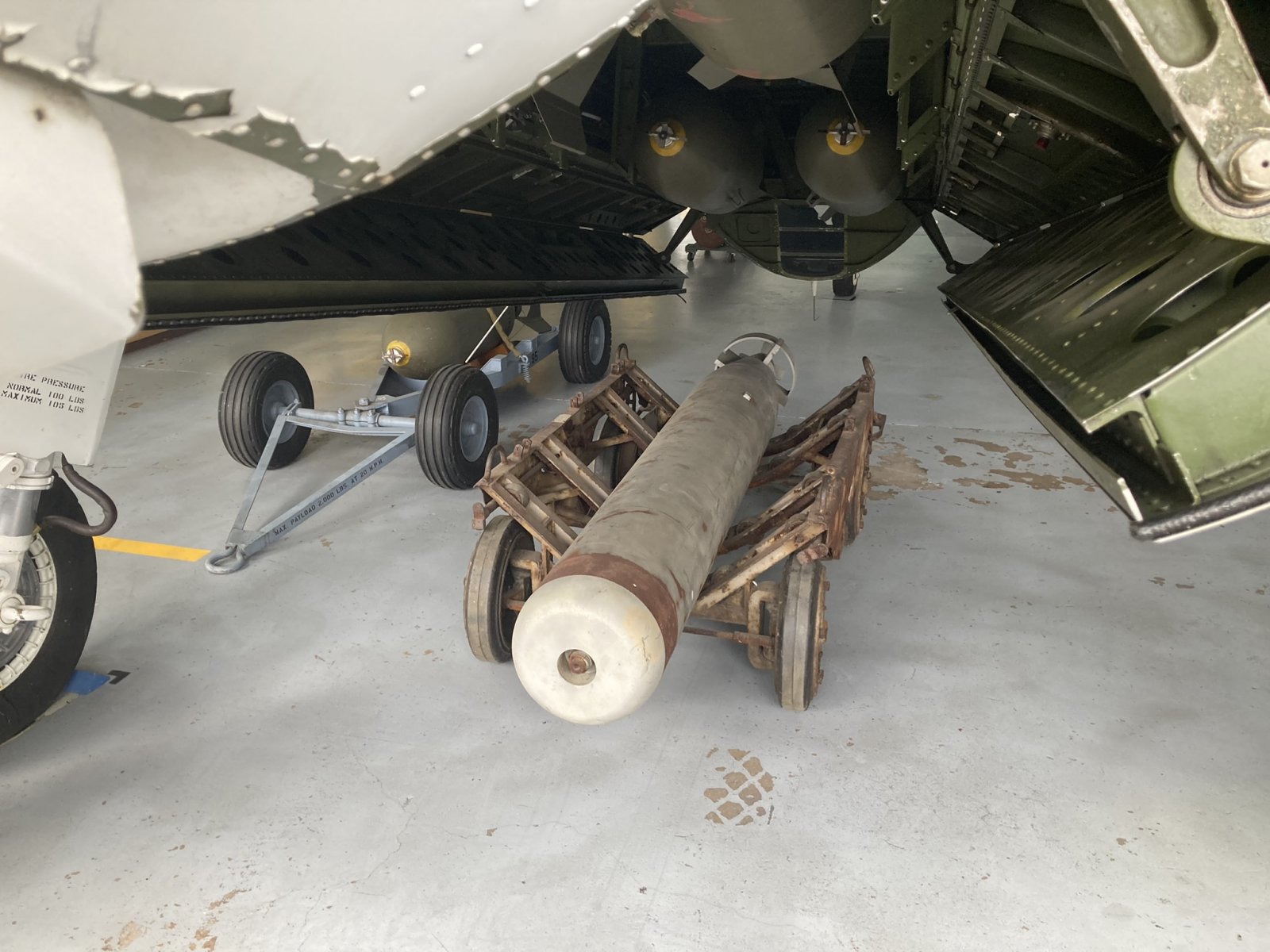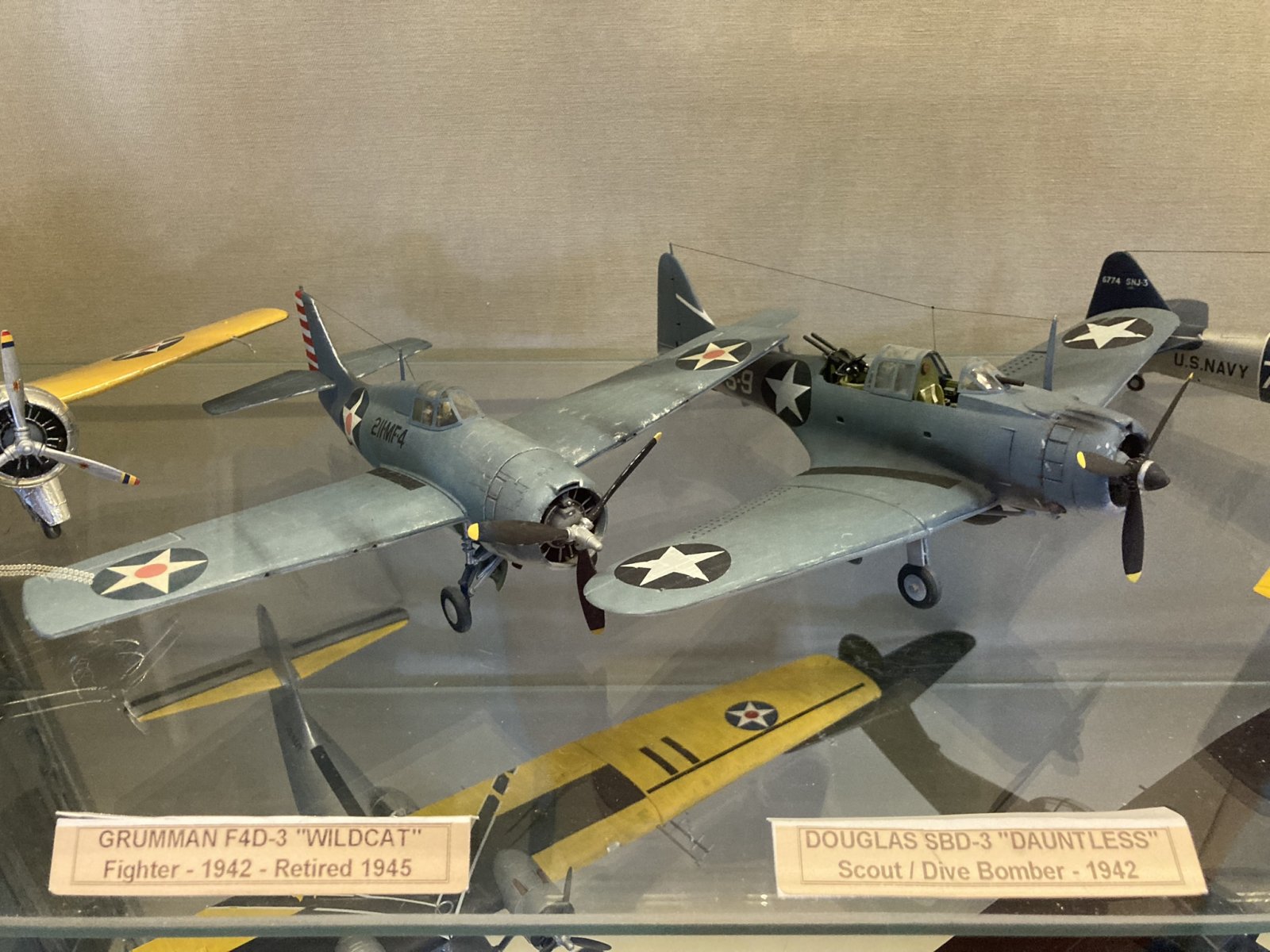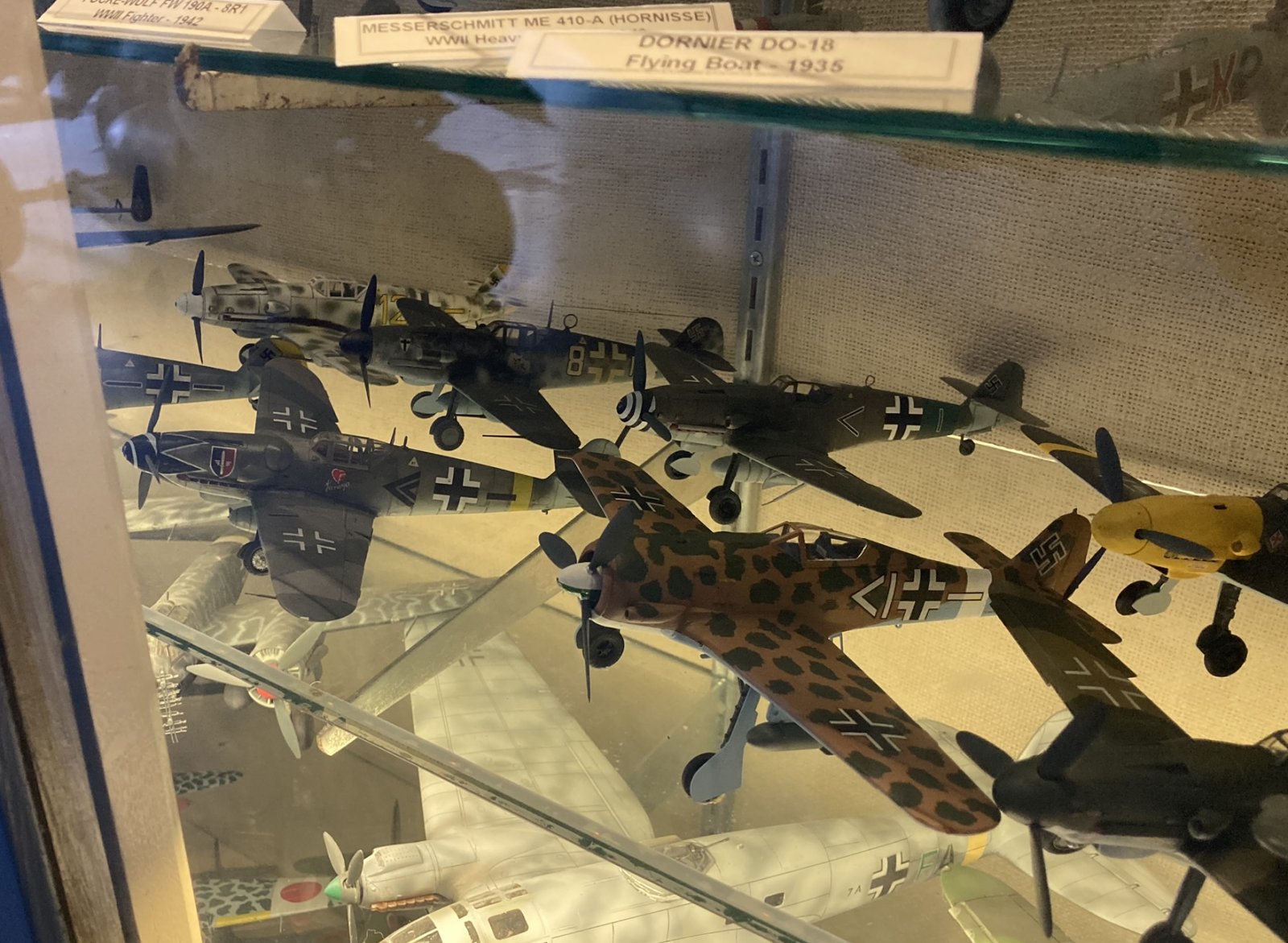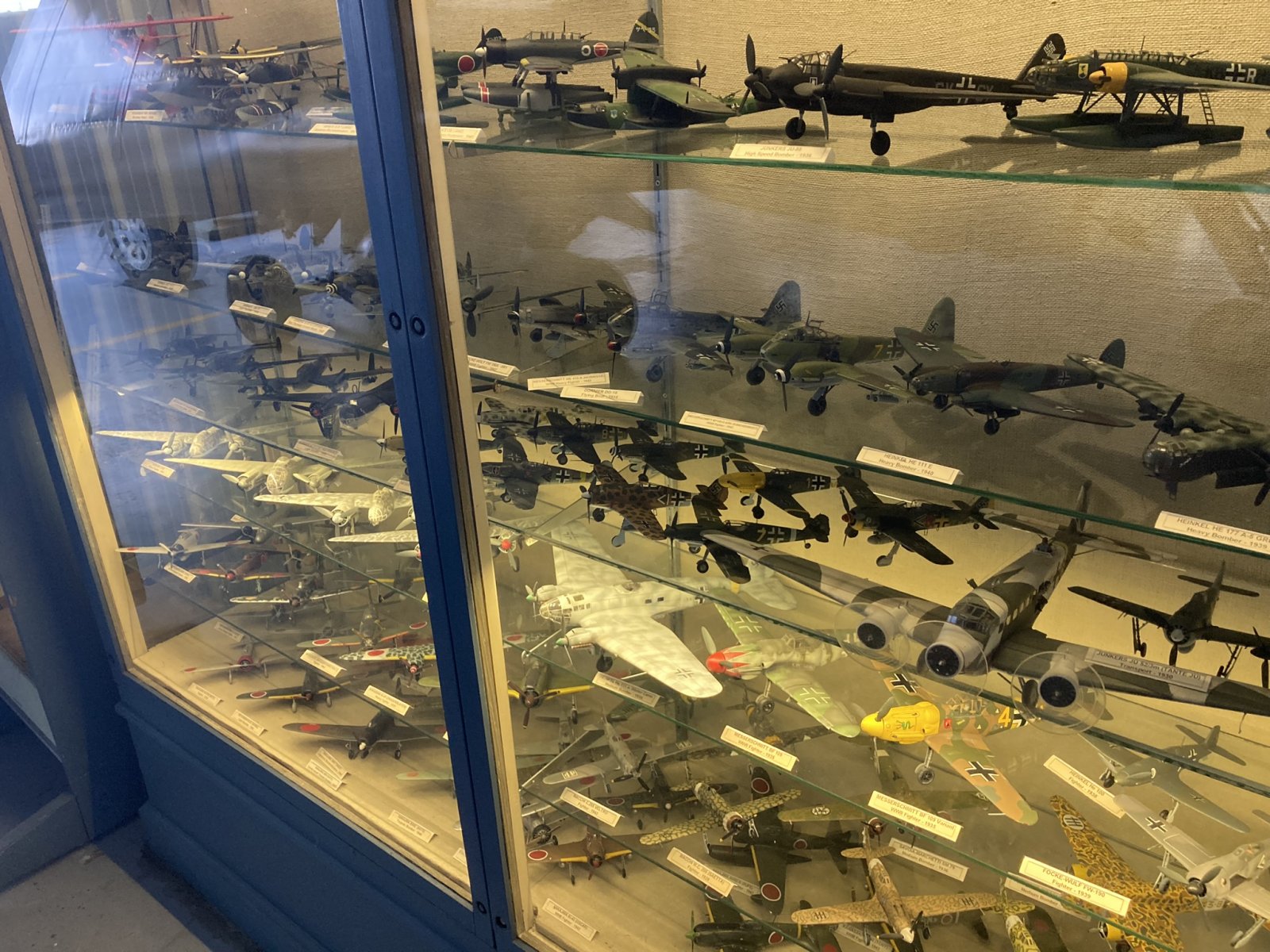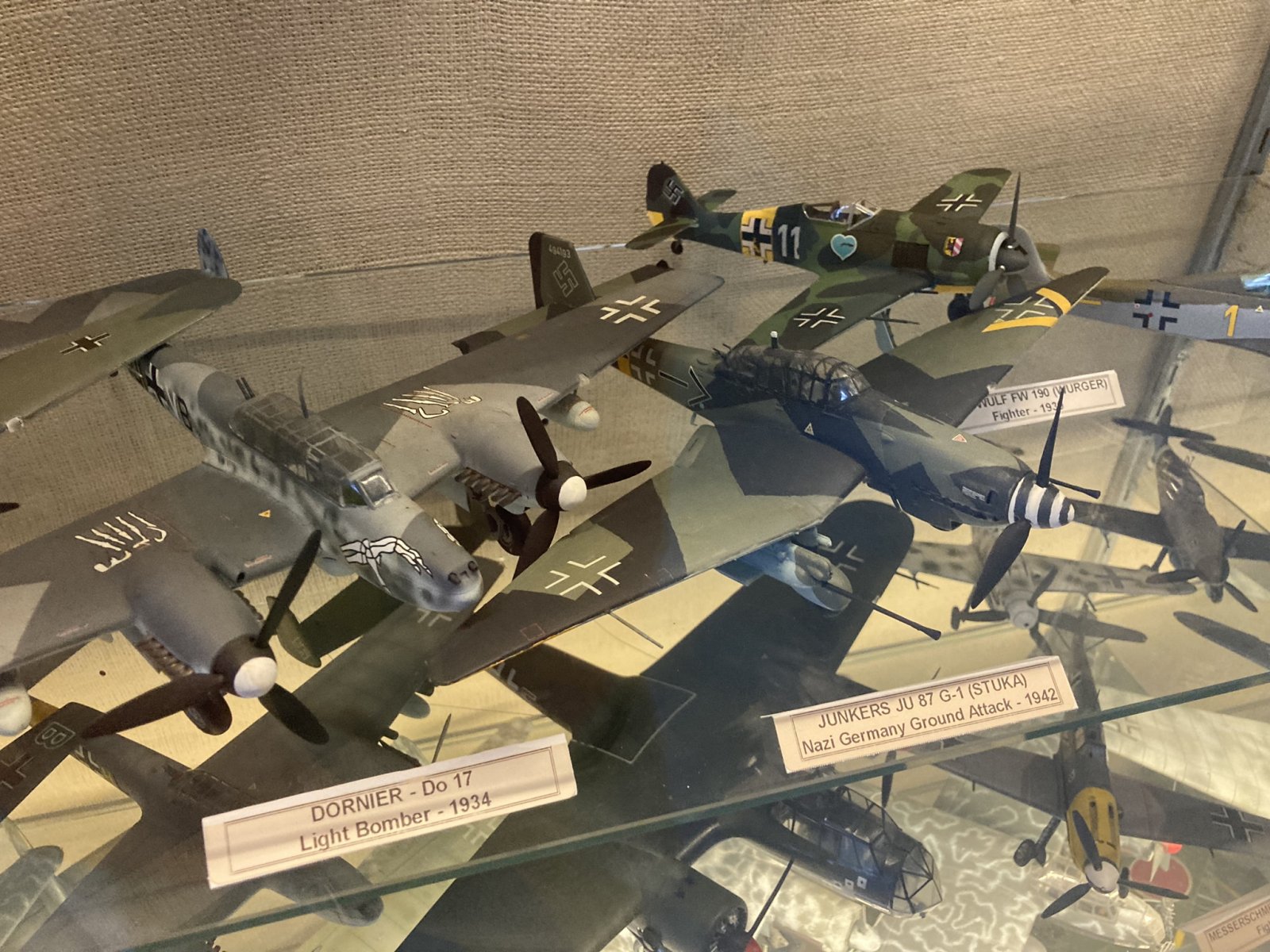January 27, 2024 - Visit the Mid-Atlantic Air Museum
Bruce was in town so we went flying. Our destination was Reading Airport up in Pennsylvania. They have a nice on-field restaurant called Klingers. They also have the Mid-Atlantic Air Museum. After a 30 minutes transit, I called Reading Tower, only to be told to contact Approach. What? Reading just has the normal Class D airspace, not Class C. First time this has ever happened to me. But, OK, I called Approach. They gave me a squawk code and vectored me in. Then back to Tower. I should pointout that the airport was practically deserted. Maybe the tower was just training?
We landed, had a nice lunch at Klingers, then taxiied to the other side of the field to the museum. I have been once before, three years ago. Link.
Here, the RV-7 is parked on the museum's ramp, by their outside static display collection.
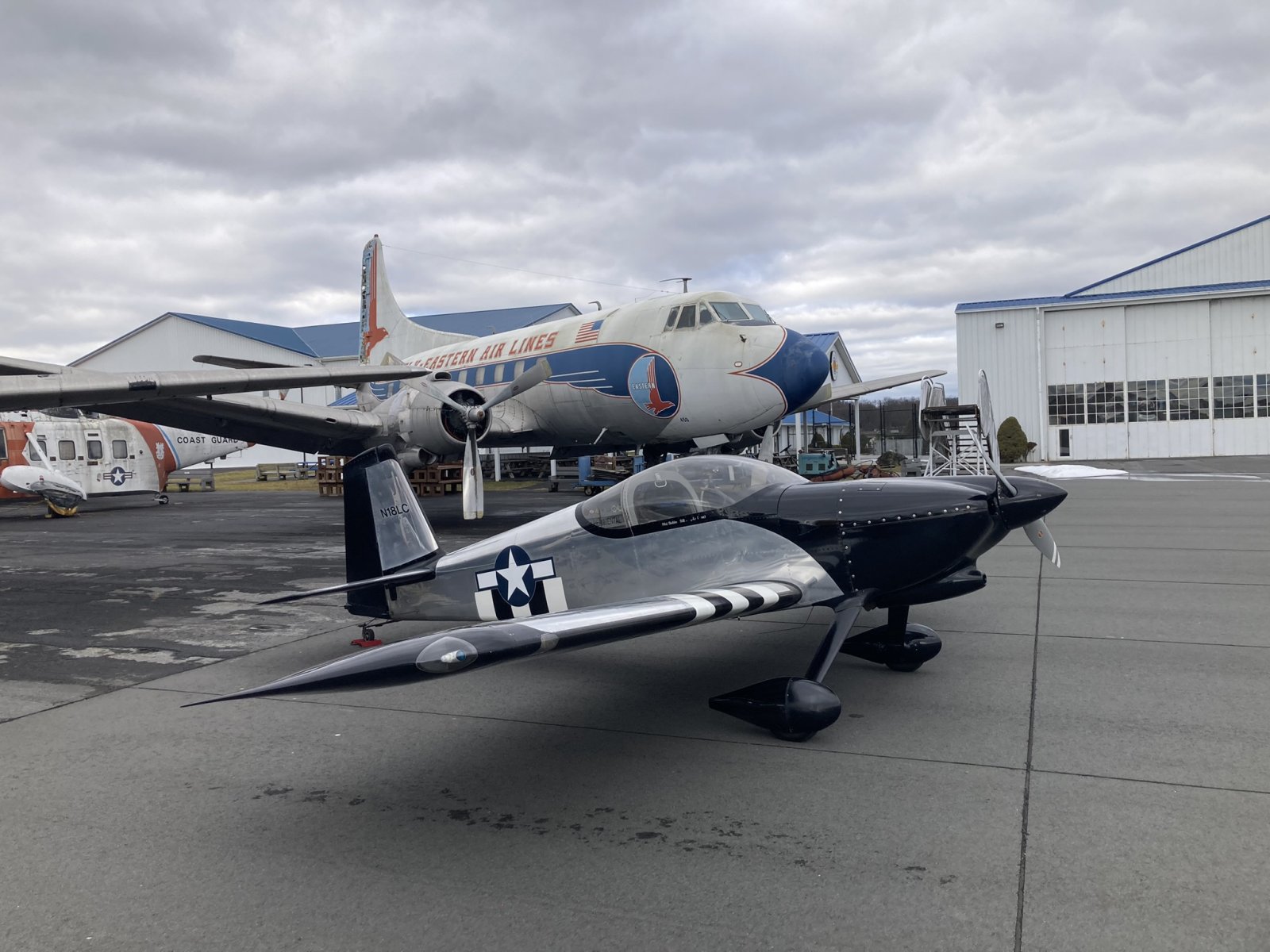
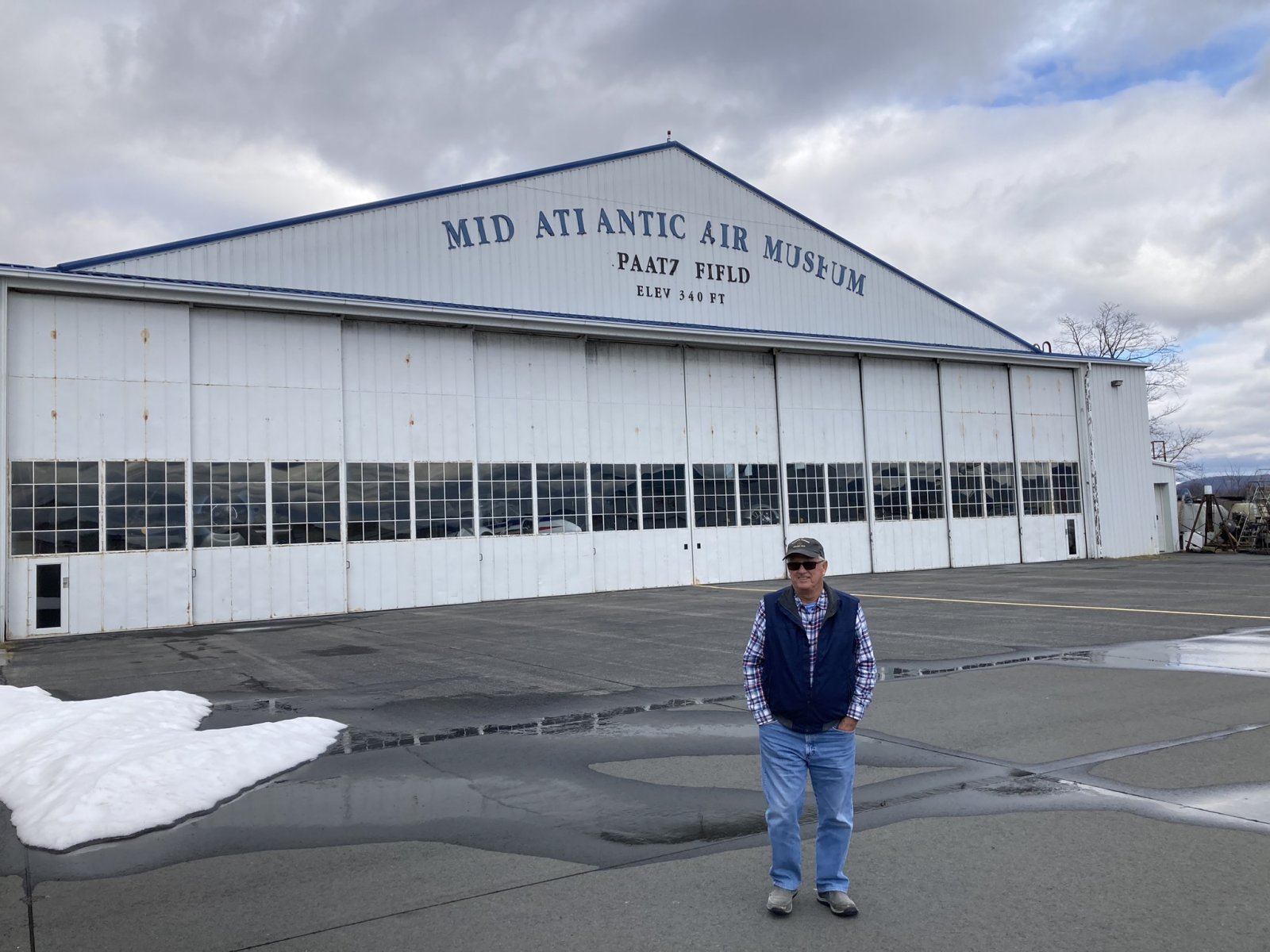
In 1925, Willard Custer noticed how very strong winds had managed to lift the roof of a barn. He realized that the high velocity of the wind created a lower pressure above the roof while the pressure remained high inside, literally lifting the roof off. This low pressure above/high pressure below is the same phenomenon that allows an airplane wing to provide lift. Custer developed a wing design incorporating a semi-circular channel or "half barrel" shape in which an engine was to be fitted, in order to draw air over the wing and, in 1929, he received a United States patent.
The arrangement is intended to draw enough air over the wing, even when moving slowly, to create sufficient lift to fly. Custer claimed that this layout, the channel wing, gave STOL operating capabilities and resulted in a design "which is an aircraft not an airplane. It brings the air to the lift surfaces and reduces pressure to fly at 8 to 11 mph."
Custer went on to develop and build the five-seat CCW-5, intended for commercial sale. The first example N6257C was designed by Custer but built by the Baumann Corporation of Santa Barbara, California. It utilized an adapted fuselage and tail assembly of a Baumann Brigadier. Power was from two pusher 225 h.p. Continental O-470 engines. The first flight was made on July 13, 1953
The second example N5855V was manufactured at the Custer factory. It again used a Baumann Brigadier fuselage and tail assembly. This aircraft first flew on June 19, 1964. Although several firms expressed interest in production of the design, all failed to provide the necessary downpayment.
The CCW-5 accommodated five persons, and its power plants are suspended in the center of the 6-foot chord wing channels on tubular frameworks attached to the wing spars. The aircraft draws air through the channels at high velocity, decreasing pressure over the wings and increasing lift. The CCW-5 was claimed to be capable of flying at a sustained speed of 35 miles per hour.
The CCW-5 continued to make developmental flights during the 1960s and 1970s, but no production orders were obtained.
N5855V was donated to the Mid-Atlantic Air Museum and is pictured here. It's kind of sad to see it sitting outside exposed to the elements. This plane is worthy of a restoration and be sitting inside a building or hangar. But that takes a lot of money which the museum does not have.
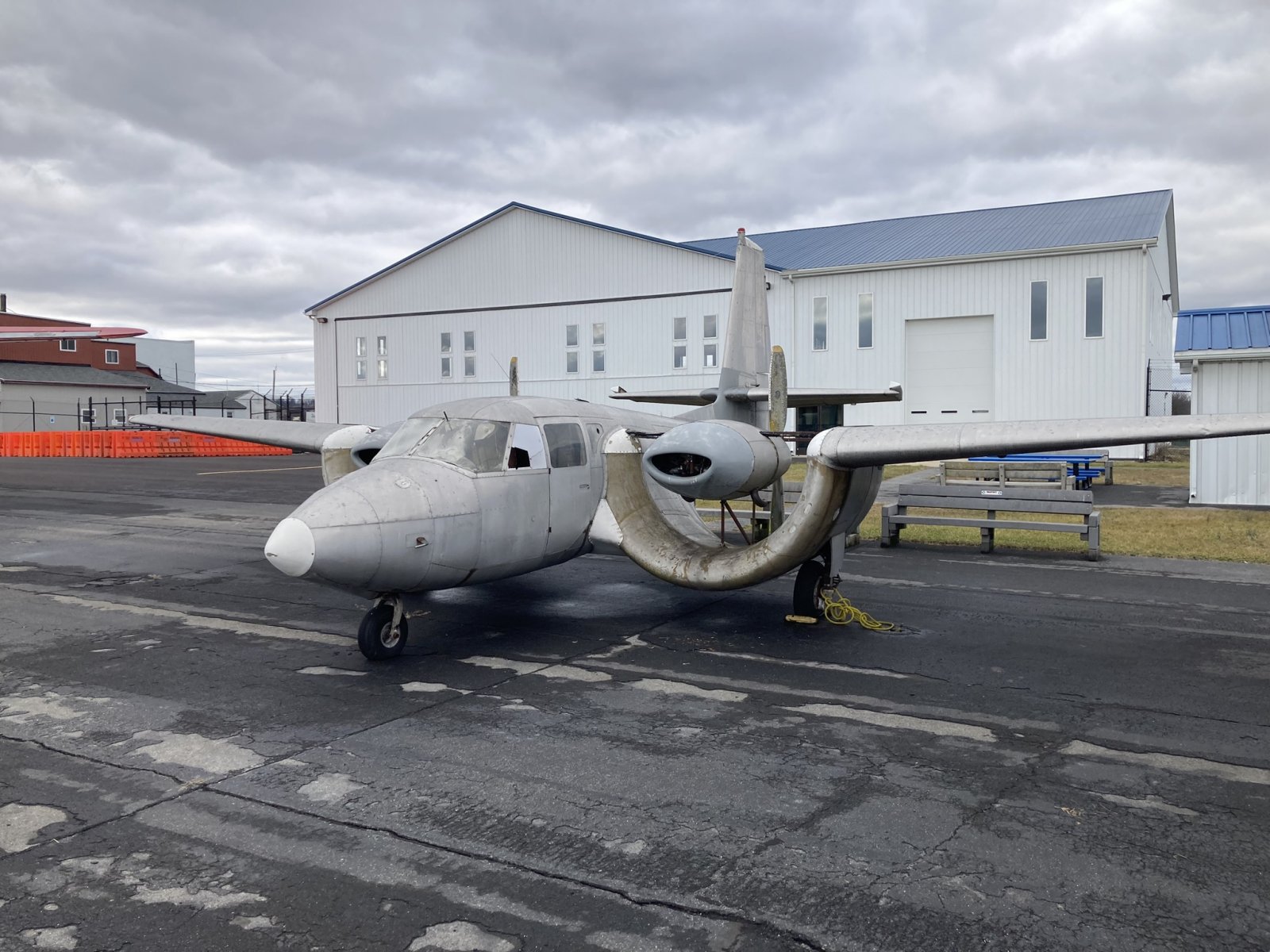
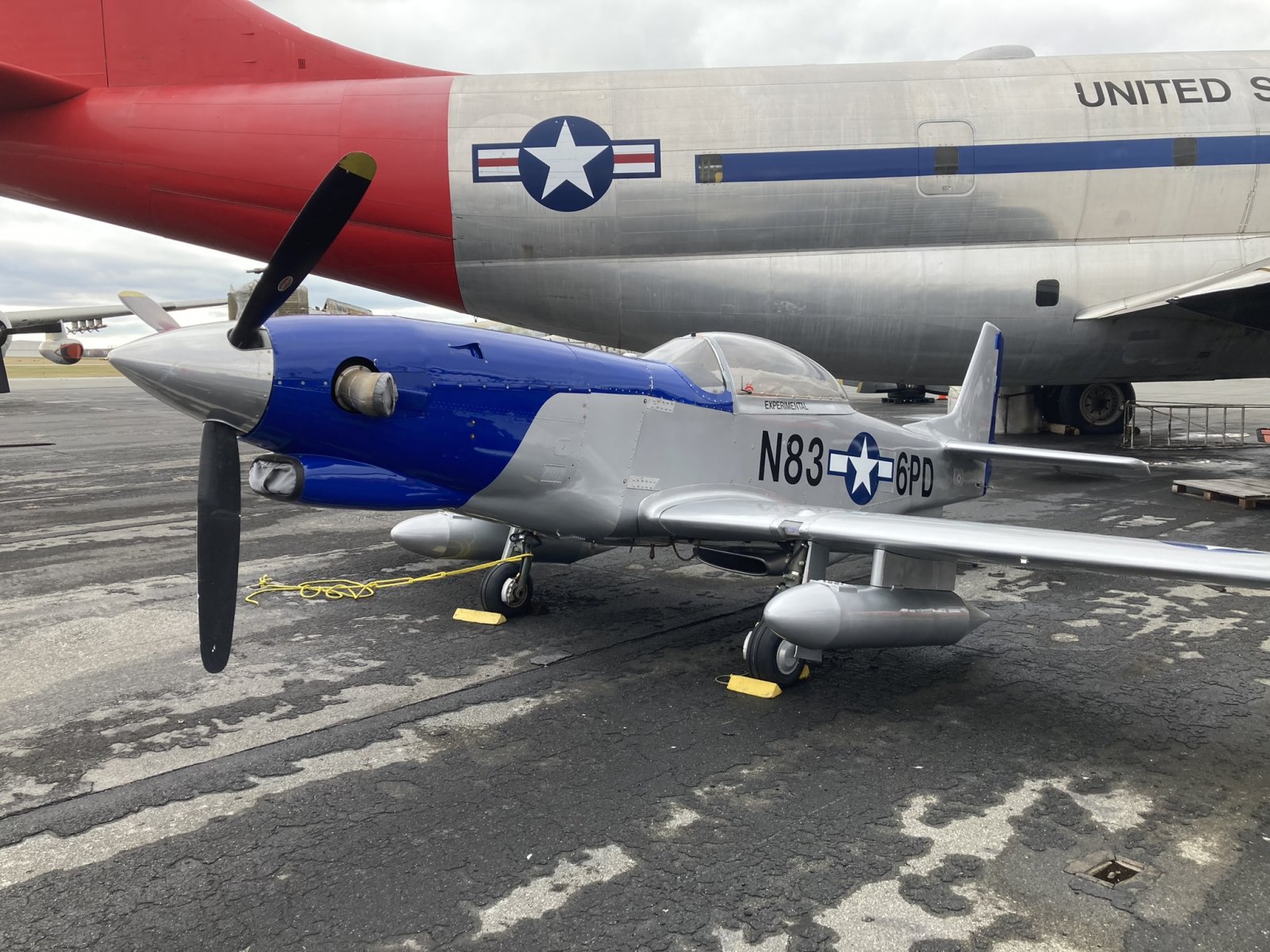
The Museum's static displays are on the right with the Tower, Terminal and Klingers across the field.
